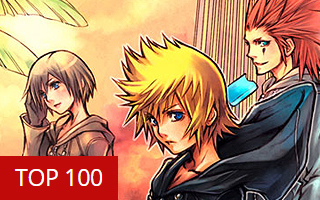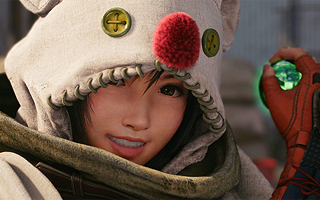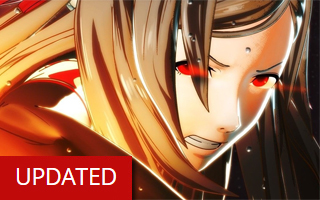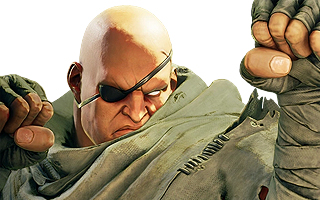Retro Revivals
Top 10 Best Retro Video Game Revivals of All Time!
Technology is constantly advancing, and this means that video game sequels will generally look better than their predecessors. Every now and again, a developer will attempt to emulate the look and feel of an older game rather than pushing the technological envelope. This sounds counterproductive, but it makes sense for many reasons. From a practical standpoint, it’s cheaper to create pixel art and chiptunes than it is to produce high-definition 3D assets and an orchestrated soundtrack. A retro sequel can also help cleanse the palette after a franchise falls off the rails. If a series peaked in popularity 20 years ago and was followed by a string of forgettable follow-ups, a retro sequel might help people remember why the franchise was popular in the first place. We’ve already taken a look at nostalgia levels and legacy boss battles, but this list is focused on entire games rather than specific components. Keep in mind that these games aren’t merely being ranked in order of how good they were. Instead, we’ll take into account how committed the developers were to the retro theme and how much of an impact the game made on the series.
10
Excitebike: World Rally
2009

Excitebike was one of Nintendo’s biggest games in the early ’80s, but they didn’t do a lot to promote the franchise after the NES era. A Mario-themed remake was broadcast on the Satellaview in 1997, but virtually no one outside of Japan was aware of its existence. Excitebike 64 was well-received in 2000, but it arrived late into the Nintendo 64’s lifespan and didn’t receive the same promotional push that other franchises like StarFox or even Pilotwings had received. Excite Truck on the Wii could be viewed as a spiritual successor to the Excitebike series, but it was drastically different from its motocross-themed predecessors. In 2009, Nintendo went back to basics and quietly released Excitebike: World Rally as a WiiWare title. The game had an online component and featured optional motion controls, but nearly every other aspect of the game was lifted straight out of the 1984 original. It was a lot more simplistic than the Nintendo 64 sequel. The camera was locked into place, players didn’t have to worry about steering their bikes, and the tracks were laid out in a straight line and littered with ridiculous jumps. All players had to do was choose their lane, accelerate, and try not to biff it while landing their bikes. The graphics were obviously a step up from the NES version and the isometric camera angles were a nice addition, but the game played exactly like the original did and basically ignored everything that had been introduced in Excitebike 64.
9
Double Dragon IV
2017

When Arc System Works acquired the Double Dragon IP from Technos in 2015, they decided to turn back time. Wayforward gave the series a toally ’80s makeover with the release of Double Dragon Neon in 2012, but Arc System Works was even more committed to the retro theme. Double Dragon IV borrowed the visual style from the NES trilogy, and some of the assets looked like they had been recycled from past games. The soundtrack also had a retro feel, and players could even choose chiptune instruments if they were so inclined. The developers went so far as to include a head-to-head mode like the one that was featured in the first NES game. Arc System Works would have been well within their rights to slap the Double Dragon IV logo on literally anything, but they went out of their way to hire Double Dragon veterans. The development team consisted of five people, and it included the director, character designer, and music composer from the original arcade game. It’s debatable whether or not the play mechanics aged gracefully, but the developers deserve a lot of credit for being so dedicated to the retro premise.
8
Final Fantasy IV: The After Years
2008

Final Fantasy VII was a huge step forward for the series in many ways. It featured polygonal graphics, dynamic camera angles, and slick CGI cutscenes that earlier games in the series weren’t capable of producing. The 2D games from the NES and SNES days were relics of the past, and the series was all about cinematic qualities and Hollywood-like production values. There were a number of remakes that used traditional 2D graphics, but it didn’t look like we’d ever see a brand new 2D Final Fantasy game ever again. In 2008, Square Enix launched an episodic mobile game called Final Fantasy IV: The After Years. The game was set 17 years after the events of Final Fantasy IV, and it featured the original cast. The game was deliberately designed to look like a SNES game, and this aesthetic was kept when the game was ported to the WiiWare service in 2009. Everything from the tilesets to the sprites made it look like a 16-bit offering, and they even tried to replicate Mode-7 effects for the airship sequences. It’s unfortunate that the story was a disjointed mess, because I would have liked to see other games use the After Years model. If they released a sequel to Final Fantasy VI that looked and played like the original, I would have been all over it.
7
Blaster Master Zero
2017

The original Blaster Master deserves to be mentioned alongside Metroid and Zelda II as one of the best adventure games of the 8-bit era. Sunsoft apparently caught lightning in a bottle, and they struggled to release a worthy follow-up. The Genesis sequel was released exclusively in North America and was made without input from the original team. Blaster Master Boy (released for the Game Boy in 1991) was a sequel in name only, and didn’t exactly do a lot for the brand either. We wouldn’t see another sequel until the year 2000 when Sunsoft released Blaster Master: Enemy Below for the Game Boy Advance and Blaster Master: Blasting Again for the PlayStation. Both of these games were solid efforts, but neither had the genre-defining magic that the first game was known for. A decade later, Sunsoft released Blaster Master: Overdrive as a WiiWare title. This was a re-imagining of the original with updated graphics and sound, but it received mixed reviews and the series was put to sleep for another seven years. In 2017, we were finally given a worthy follow-up to the original. Blaster Master Zero was based on the first game and it used an 8-bit aesthetic, but it offered many “quality of life” improvements like an in-game map and a proper save system. It could have been mentioned on our list of best remakes, but the retro graphics make it a good fit for this countdown too. The game was successful enough to warrant its own follow-up, and Blaster Master Zero 2 was the true Blaster Master sequel that we always wanted. Inti Creates treated the Blaster Master franchise with the respect it deserved, and I wouldn’t have expected anything less after seeing what they did with Mega Man 9.
6
Contra 4
2007

Konami was on a roll during the PlayStation era. Symphony of the Night and Metal Gear Solid were among the best games of the generation, and the company had one hit after another. Unfortunately, Contra: Legacy of War couldn’t hold a candle to its predecessors. Konami outsourced the project to a third-party development team, and the game was marred by awkward controls and boring level designs. Contra: Shattered Soldier was a return to form when it was released on the PS2 six years later, and it marked a return to the two-dimensional gameplay that the earlier games employed. Wayforward Technologies took things a step further with the release of Contra 4 in 2007. While Shattered Soldier used polygonal graphics, Contra 4 was all about pixel art. If you’re going to paint a game as a direct sequel to a beloved SNES classic, it makes sense for the game to look like a SNES game too. Wayforward filled both DS screens with as much action, power-ups, and giant bosses as they could, but they never strayed too far from the Contra III formula. The game outright ignored many of the mechanics introduced in later games (such as the fixed weapon configurations) and went back to the old formula of picking up power-ups to obtain new weapons. Contra 4 was one of the best games in the series, and it’s unfortunate it doesn’t get more love.
5
The Legend of Zelda: Four Swords Adventures
2004

Most fans appreciate The Wind Waker for its ambitious cel-shaded art style, but the game caused anger and confusion when it was revealed in 2002. A year after the game hit store shelves, Nintendo released another game with a more traditional art style. Four Swords Adventures was the first console-based Zelda game to use a top-down perspective since 1991, and it was deliberately designed to look like A Link to the Past. The game featured a dynamic camera and enhanced atmospheric effects that wouldn’t have been possible on the SNES, but it was obvious where the game was drawing its inspiration from. Unfortunately, it was one of the least successful games in the entire franchise. Four Swords Adventures allowed up to four people to play at once, and it used Game Boy Advances as controllers in lieu of the standard GameCube pad. If a player was separated from the group, they’d continue to play on their own Game Boy Advance screen. It was an interesting concept, but getting four people together with four Game Boy Advances (and four GameCube-to-GBA link cables) was impractical. The very aspect that made Four Swords Adventures so unique prevented people from playing the game. Four Swords Adventures didn’t exactly “revive” the franchise, but it was pretty wild to see a 2D Zelda game on the GameCube.
4
Pac-Man Vs.
2003

Pac-Man was one of the most successful arcade games ever, but Namco didn’t know what to do with the franchise when the Golden Age of arcades came to an end. After the release of Pac-Mania in 1987, Namco pretty much abandoned the classic Pac-Man formula. Pac-Man was ported to countless consoles, but Namco never developed a true sequel for the home audience. Pac-Attack was a puzzle game similar to Tetris, Pac-Man 2 was a point-and-click adventure game, Pac-In-Time was a 2D platformer, Pac-Man World was a 3D platformer, and Ms. Pac-Man Maze Madness was a block-based puzzle game. If you wanted a game where you would eat dots, avoid ghosts, and navigate through mazes, you pretty much had to stick with the 1980s arcade games. In 2003, Shigeru Miyamoto and his team at Nintendo put together a quick demo to show off the capabilities of the GameCube-to-Game Boy Advance link cable. One player would control Pac-Man on their Game Boy Advance, while the other three players would assume the role of one of the ghosts and play off the television screen. Each ghost had a limited field of vision on the TV screen, but the player with the GBA could see the entire maze from a top-down perspective. From their point of view, the game looked and played exactly like the original arcade game did. Namco agreed to publish the game themselves, but they were surprised that there was so much interest in reviving an old formula. If Pac-Man Vs. hadn’t been released, it’s not certain if Pac-Man Championship Edition would have ever seen the light of day.
3
New Super Mario Bros.
2006

Would you believe that there were a grand total of zero side-scrolling Mario platformers released between 1992 and 2006? (There were spinoff games like Wario Land and Yoshi’s Island released during this period, but all of the mainline Mario titles were 3D affairs.) Ports of classic Mario games landed on the Game Boy Advance, but the aptly-named New Super Mario Bros. was the first brand new 2D Mario game in over a decade! The game followed the same formula that past Mario titles used, and Mario was more maneuverable than ever before thanks to wall jumps, momentum-based triple jumps, and other tricks that were carried over from the 3D Mario games. New Super Mario Bros. also marked the return of many gameplay elements that hadn’t been seen in years. We hadn’t seen question blocks in a Mario side-scroller since Super Mario Land 2, breakable bricks had been MIA since Super Mario Bros. 3, and the flagpoles hadn’t been used as stage markers since the Japanese version of Super Mario Bros. 2 was released way back in 1986. The Nintendo DS reached a brand new generation of gamers, and New Super Mario Bros. introduced millions of them to gaming’s most iconic franchise. With sales exceeding 30 million, it outsold Super Mario 64, Super Mario Sunshine, and Super Mario Galaxy combined! It turns out that 2D Mario games had more mainstream appeal than their 3D counterparts, and New Super Mario Bros. helped usher in a new era of side-scrolling platformers. The absence of a retro art style prevents it from being ranked higher on this list, but it’s arguably the most important game on this countdown.
2
Sonic Mania
2017

Sonic the Hedgehog has a passionate fanbase, but the series has never been able to recapture the relevancy it had on the Genesis. Sonic’s popularity rivaled Mario’s at the height of the 16-bit wars, and the franchise helped define a generation of gamers. Sadly, Sega failed to deliver a true Sonic game on the Saturn, and their 3D offerings in subsequent years were uneven at best. You could still get an authentic 2D Sonic experience on handheld systems, but console and PC gamers were left out in the cold. Sega tried to emulate the original games with Sonic the Hedgehog 4 in 2010, but questionable design choices prevented the game from catching on in a meaningful way. Sonic Mania was a return to form for the franchise, and it felt like a natural evolution of the 16-bit titles that we all knew and loved. The game looked like an enhanced Genesis game, and the levels played homage to its predecessors. Unlike Sonic the Hedgehog 4, the play mechanics in Sonic Mania were finely tuned and the physics actually made sense. Even though it was clearly inspired by the early Sonic games, the level designs and boss battles were surprisingly creative. The development was led by a prominent member of the Sonic fangame community, and the entire project was driven by the fans’ love for the series. I know it’s a bold statement, but Sonic Mania might very well be the best game in the entire series.
1
Mega Man 9
2008

Mega Man was alive and well in 2008, but the series had been broken up and spread across a number of smaller sub-franchises. After the 8-bit era was over, Capcom released spinoffs like Mega Man X, Mega Man Battle Legends, Mega Man Battle Network, Mega Man Star Force, Mega Man Zero, Mega Man ZX, and probably a couple more that I’m forgetting about. It was nice to know that Mega Man wasn’t forgotten, but it wouldn’t be unfair to suggest that the Blue Bomber reached the height of his popularity on the NES. When Capcom decided to return to their roots with Mega Man 9, they didn’t pull any punches. Mega Man 8 was released on the PlayStation and Saturn in 1997, but Cacpom wanted Mega Man 9 to look and play like the NES games. In the midst of the HD era, Mega Man 9 was all about low resolution graphics, limited color pallets, and a 4:3 aspect ratio. (They also replicated sprite flicker and other graphical abnormalities that the NES was known for!) The chiptune soundtrack complimented the retro visuals, and the play mechanics were intentionally simplistic. Even the slide maneuver – which had been introduced in Mega Man 3 – was considered too modern for Mega Man 9. Capcom deserves a lot of credit for jumping in with both feet, and they went so far as to commission over-the-top artwork that mimicked the style of their classic North American box art. The whole thing seemed like a gimmick at first, but Mega Man 9 turned out to be one the best-designed games in the entire series.





Do you agree with this list? Let us know what you think by leaving a comment below. Your opinion matters!